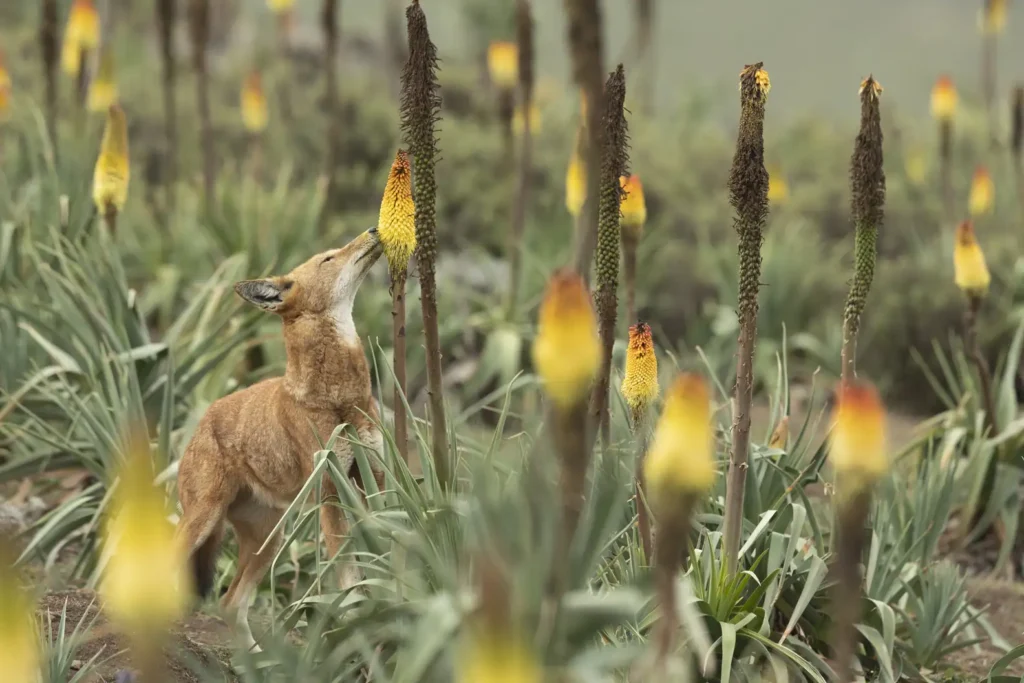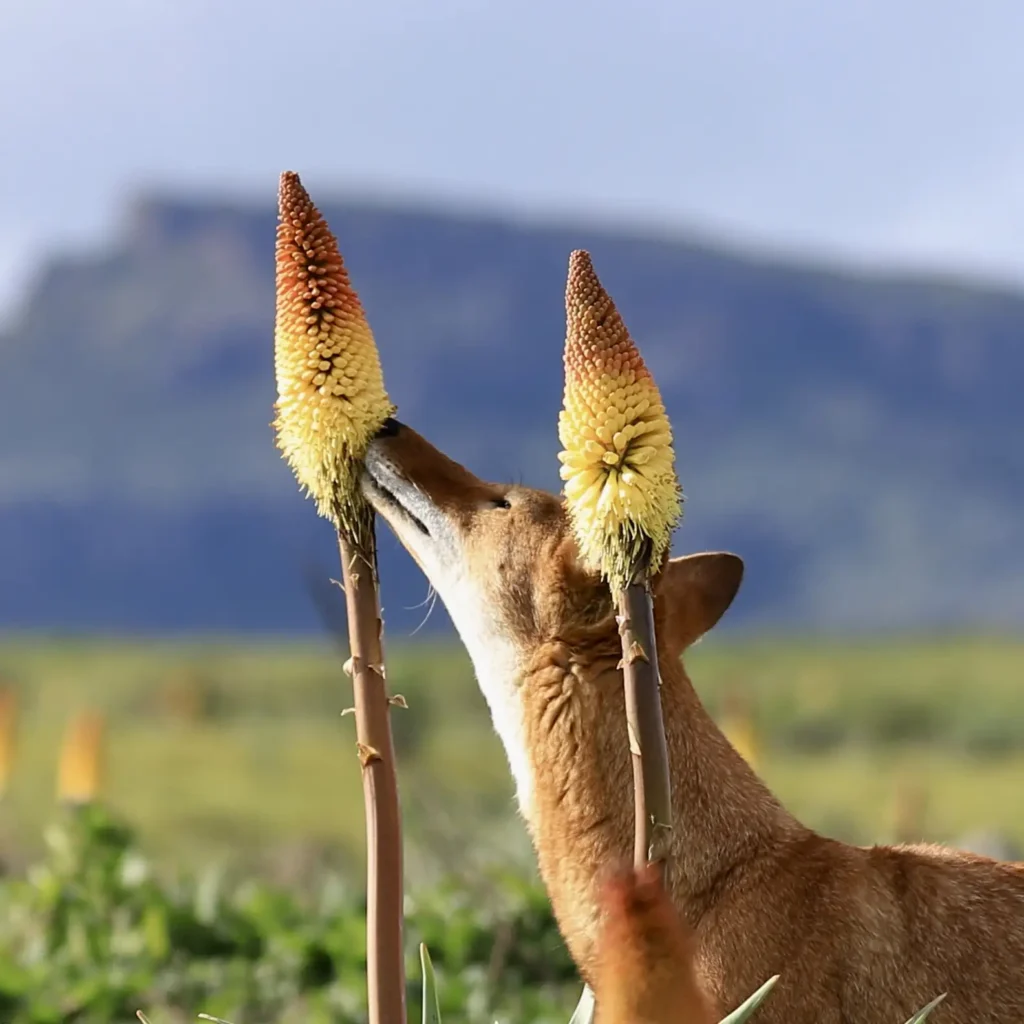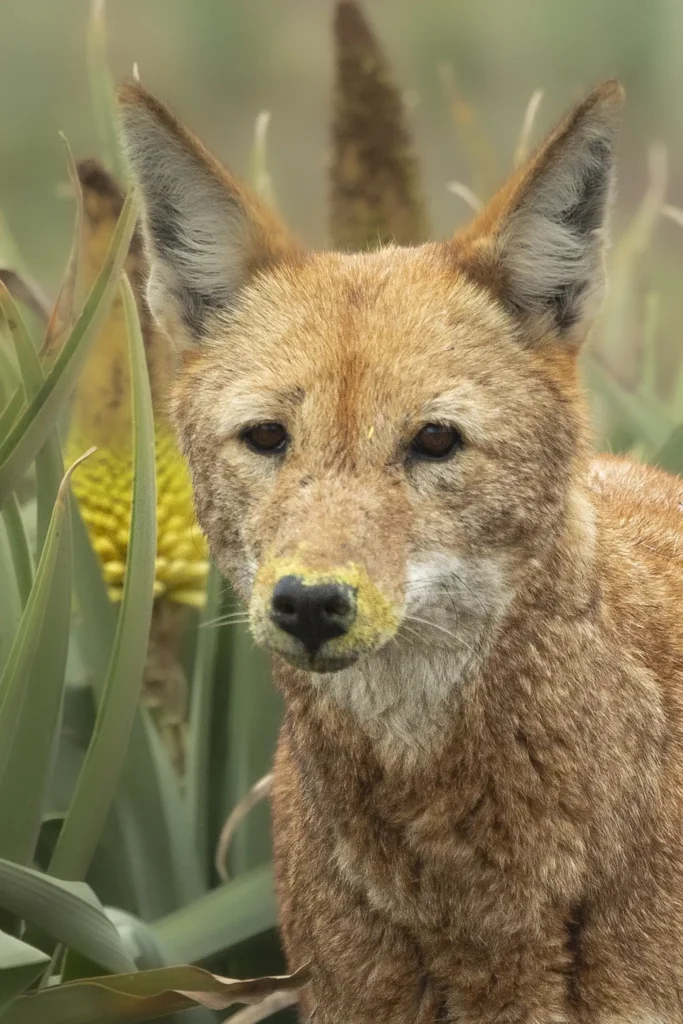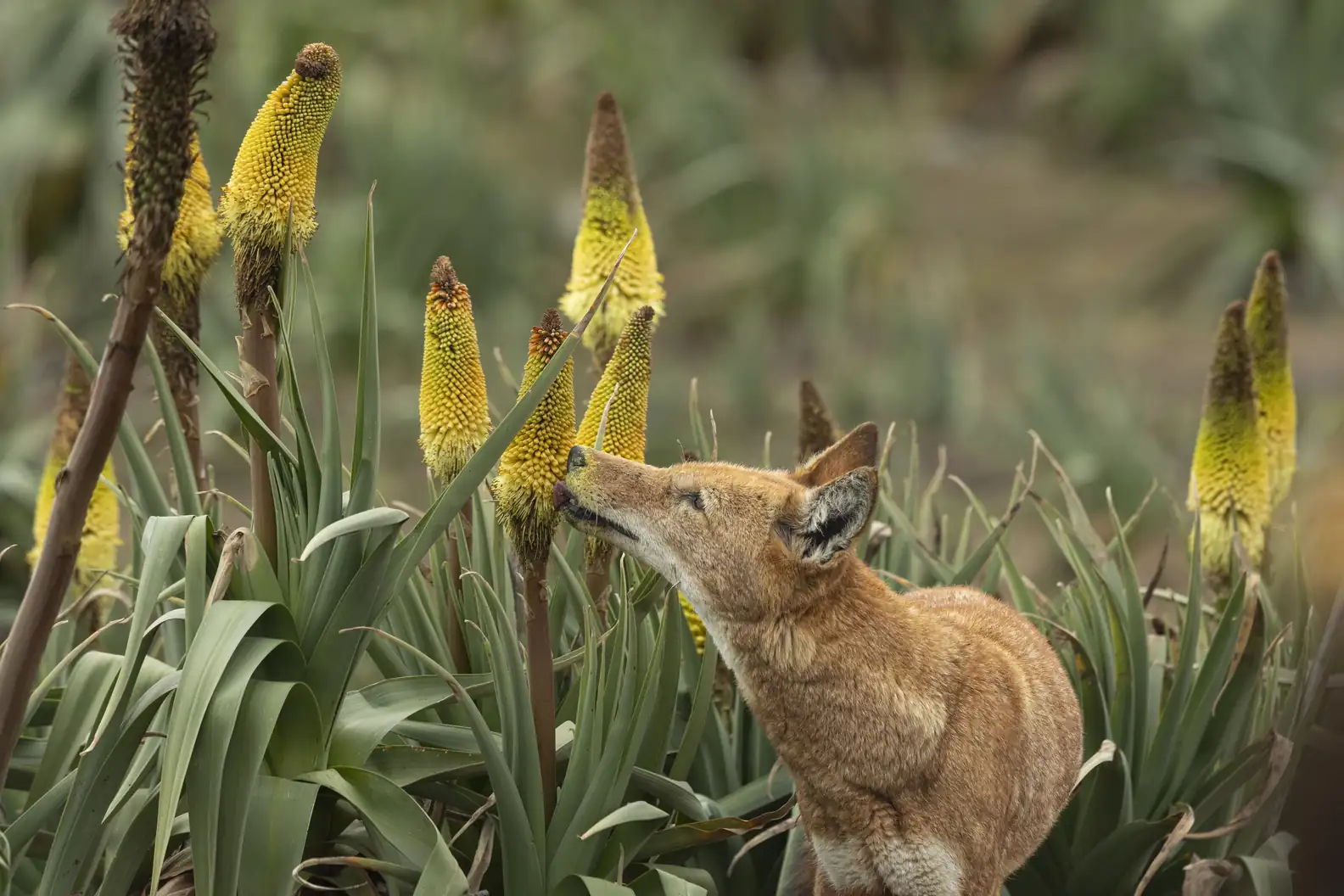Researchers call it the “dessert hypothesis” 😂
After a satisfying meal, nothing compares to the pleasure of a rich dessert. While desserts are often seen as a human indulgence, it turns out that an unexpected animal shares the same fondness for sweets.
Years ago, conservation biologist Claudio Sillero, the founder of the Ethiopian Wolf Conservation Programme (ECWP), made an intriguing observation while studying Ethiopian wolves. Using binoculars, he noticed one of the wolves licking the nectar from a red hot poker flower. In the Ethiopian Highlands, the local children enjoy drinking the nectar, and having tasted it himself, Sillero knew it was sweet. However, he was puzzled — why would a carnivorous wolf be sipping nectar from a flower?

Ethiopian wolves are elusive creatures, so capturing this behavior on film was no easy feat. Wildlife photographer Adrien Lesaffre dedicated two years to getting close-up shots of the wolves drinking nectar.
When Sandra Lai, an ecologist at the University of Oxford and a senior researcher at ECWP, saw Lesaffre’s images, she decided to delve deeper into the mystery. Her team’s research revealed that nectar consumption is a regular habit for Ethiopian wolves. “They usually move from flower to flower, spending just a few seconds on each,” Lai explained. “It’s like watching a bee in action!”

As for the purpose behind this behavior, ECWP’s findings suggest that the nectar doesn’t provide much energy or nutrition, so the wolves drink it simply because they enjoy the taste. This has been termed the “dessert hypothesis.” Lai added, “It seems that, like humans, some wolves have a stronger craving for sweets than others.”

The joy the wolves seem to experience while drinking nectar is undeniable. “It’s remarkable to see how content they look when they lick the flowers,” Lai remarked.
Thus far, Ethiopian wolves are the only large carnivores known to consume nectar. Both the wolves and the flowers are native to the Ethiopian Highlands, making this an extraordinary, localized phenomenon.
The ECWP researchers even suggest that, as the wolves collect pollen on their snouts while feeding, they might be inadvertently helping pollinate the flowers. Further studies are needed to understand this intriguing behavior. However, the Ethiopian wolves and their Afroalpine habitat are under threat. With fewer than 500 wolves remaining, protecting this species and their unique environment is crucial.
Lai emphasized, “This interaction is so rare and special that it’s worth safeguarding for future generations.”
